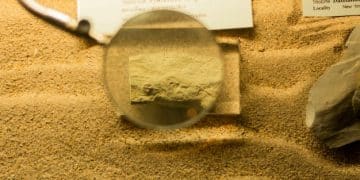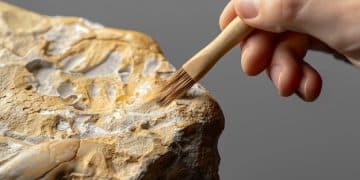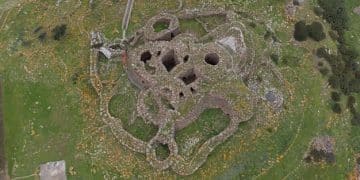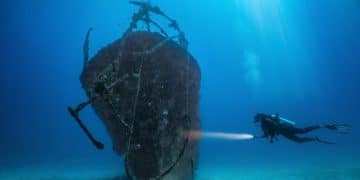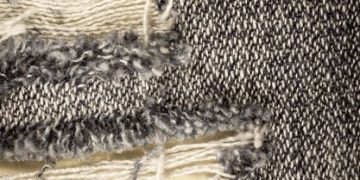Ancient DNA Breakthrough: Early American Migration Revealed

Recent archaeological discoveries in the US, leveraging ancient DNA analysis, are revolutionizing our understanding of early American migration patterns, offering unprecedented insights into the origins and dispersal of the continent’s first inhabitants.
The field of archaeology has been profoundly transformed by advances in ancient DNA (aDNA) analysis, providing unprecedented clarity into the intricate histories of human migration. Specifically, the latest US-based archaeological discoveries, combined with groundbreaking aDNA research, are dismantling long-held assumptions and actively reshaping our understanding of Ancient DNA Breakthrough: What the Latest US-Based Archaeological Discoveries Reveal About Early American Migration Patterns. This scientific revolution allows us to trace genetic lineages across millennia, painting a richer, more nuanced picture of how early populations populated the Americas.
Unraveling the Beringia Pathway: New Genetic Evidence
The long-standing theory that early humans migrated to the Americas via a land bridge across the Bering Strait, known as Beringia, has been a cornerstone of archaeological thought. However, recent ancient DNA analyses from US-based sites are significantly refining this narrative, adding crucial layers of complexity and challenging the simplistic “single wave” model.
These new genetic insights suggest that the migration was likely far more intricate than previously imagined, involving multiple waves, prolonged periods of isolation, and diversified routes. The genetic signatures found in ancient human remains across various US locations are providing a unique molecular clock, helping to pinpoint not only when but also how these early populations dispersed across the vast North American continent.
Genetic Markers and Divergence
- Mitochondrial DNA (mtDNA) Haplogroups: Studies of mtDNA, passed down through the maternal line, have identified specific haplogroups (A, B, C, D, and X) in ancient American remains. The distribution and age of these haplogroups strongly support an Asian origin, but their specific derivations and the timing of their appearance in the Americas offer new puzzles.
- Y-Chromosome Haplogroups: Paternal lineages, traced through the Y-chromosome, corroborate the mtDNA findings, albeit with their own unique patterns of diversification. Analyzing these genetic markers side-by-side provides a more complete picture of population movements and intermingling.
The latest research from skeletal remains found in sites like Anzick-1 in Montana and the Spirit Cave mummy in Nevada confirms strong genetic ties to Siberian populations. This reinforces the Beringia theory but also indicates a rapid dispersal once these groups entered the continent, suggesting favorable environmental conditions or a pre-existing familiarity with the landscape. The genetic data also hints at possible “pauses” or “standstills” in Beringia itself, where founding populations diversified before embarking on their journey southward.
These findings from US archaeology underscore the dynamic nature of early American settlement, emphasizing that the Beringia pathway wasn’t a one-off event but a complex series of movements influenced by climate, geography, and cultural adaptations over millennia. The precise dating and characterization of these genetic lines continue to evolve with each new discovery.
Coastal Route Conundrums: Unpacking the “Kelp Highway”
While the Beringia land bridge theory dominates, an alternative or complementary hypothesis, the “kelp highway” coastal route, gains increasing traction with recent US archaeological insights and ancient DNA evidence. This theory posits that early settlers may have navigated along the Pacific coast, utilizing rich marine resources, rather than solely relying on an ice-free corridor through the interior.
The appeal of this coastal route lies in its potential for earlier entry into the Americas, bypassing the challenges posed by glacial ice sheets. However, direct archaeological evidence has been scarce, largely due to rising sea levels submerging many potential coastal sites over thousands of years. Ancient DNA analysis is beginning to bridge this gap, offering indirect but compelling support.
Evidence Supporting Coastal Migration
- Ancient DNA from Coastal Remains: While rare, the discovery of ancient human remains in coastal US sites is critically important. Genetic analysis of these individuals can reveal unique lineage patterns, potentially distinct from those associated with purely interior routes, suggesting a separate or earlier migratory path.
- Resilience to Environmental Barriers: Genetic studies indicate the adaptability of early populations, hinting that coastal dwellers possessed the necessary skills to exploit marine environments—skills that would have been vital for a successful coastal migration.
Recent breakthroughs from US sites like the Channel Islands off California, where ancient remains have been found, are invaluable. Though not conclusive proof of the kelp highway in isolation, the genetic profiles of these coastal populations reveal diversifications that align with long-term habitation and specialized resource use, consistent with sustained dispersal along maritime routes. The preservation of specific marine-based diets within ancient human remains, detectable through isotopic analysis, further supports the idea of populations adapted to coastal living.
The interaction between these coastal and interior populations also becomes clearer through aDNA. Genetic mixing patterns observed between groups with distinct geographical distributions indicate that these pathways were not mutually exclusive but intertwined, contributing to the complex tapestry of early American migration. The “kelp highway” thus stands not as a replacement for Beringia, but as a critical addition to our understanding of the multi-faceted peopling of the continent.
Clovis First Re-evaluated: Pre-Clovis Occupations Confirmed
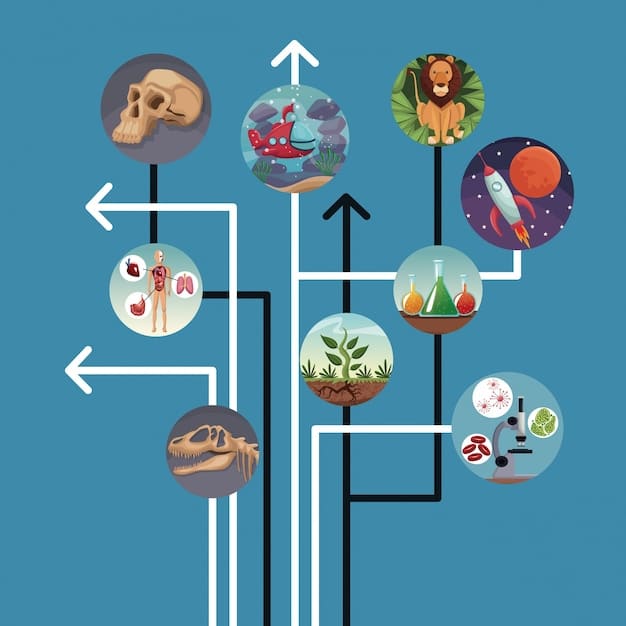
For decades, the “Clovis First” paradigm dominated American archaeology, asserting that the Clovis culture, with its distinctive fluted projectile points dating back approximately 13,000 years, represented the first human presence in the Americas. However, recent archaeological discoveries across the United States, coupled with increasingly sophisticated ancient DNA analysis, have unequivocally debunked this long-held theory, providing robust evidence for earlier, pre-Clovis occupations.
Sites like Meadowcroft Rockshelter in Pennsylvania, Buttermilk Creek in Texas, and Monte Verde in Chile (though outside the US, its early dating significantly influenced the re-evaluation within the US) have yielded artifacts and occupational layers predating Clovis by thousands of years. The integration of ancient DNA data has immensely strengthened these claims, offering biological proof of human presence during these earlier periods.
Genetic Signatures of Early Settlers
- Dating Human Remains: Ancient DNA extracted from human remains at pre-Clovis sites provides direct genetic evidence that these individuals existed long before the Clovis culture flourished. This offers an undeniable timeline for earlier settlements.
- Genetic Diversity: The genetic diversity observed in early American populations points to an older presence than the Clovis First model would suggest. Greater genetic variance requires more time for accumulation, supporting a deeper history of human occupation.
A pivotal study involving 11,500-year-old human remains from the Anzick-1 site in Montana, genetically linked to contemporary Native American populations, provided crucial support for a deep ancestral connection in North America, predating some aspects of the Clovis distribution. Further, ongoing analyses from even older potential pre-Clovis sites, though often yielding less intact DNA due to taphonomic challenges, continue to contribute to a growing body of evidence. The re-evaluation of “Clovis First” doesn’t diminish the importance of Clovis culture, but rather places it within a longer, more complex history of human migration and adaptation in the Americas.
This paradigm shift, heavily influenced by US-based archaeological and genetic studies, fundamentally alters our understanding of when and how the Americas were first populated. It opens new avenues for research into the diverse strategies and cultures of these earliest inhabitants, revealing a much richer and more extended prehistory than previously accepted.
Genomic Insights into Post-Migration Dispersal within the US
Beyond the initial entry into the Americas, ancient DNA breakthroughs are shedding immense light on the intricate patterns of post-migration dispersal within the United States. Genetic connections between archaeological sites across diverse geographical regions are revealing dynamic movements, interactions, and diversification among early populations, long after their arrival on the continent.
These genomic insights are demonstrating that the early peopling of the US was not a static process. Instead, it involved continuous movements, adaptations to different environments, and significant intergroup exchanges, all leaving detectable imprints in the genetic material preserved in ancient human remains. This provides a biological framework for understanding archaeological cultural boundaries and shifts.
Tracking Population Movements
- Regional Gene Flow: Genomic studies from Native American ancestral remains across the US indicate complex patterns of gene flow. For example, research might reveal distinct lineages in the Southwest versus the Northeast, but also evidence of intermingling over centuries or millennia, suggesting trade, alliances, or conflicts.
- Adaptation to Environment: Genetic data can highlight adaptations to specific local environments, such as variations in diet (high-protein vs. plant-based) or resistance to local pathogens. These insights correlate with archaeological evidence of subsistence strategies and settlement patterns.
For instance, genetic analysis of individuals from ancient Ancestral Puebloan sites in the Southwest offers a clearer understanding of population continuity and localized migrations over thousands of years within that region. Similarly, DNA from mound builders in the Eastern Woodlands is allowing researchers to trace the genetic relationships between different communal groups and their potential connections to later historical tribes, showcasing sophisticated social structures and extensive networks across the landscape.
The ability to analyze full genomes from these ancient individuals is providing an unprecedented resolution to these movements. It allows scientists to identify small, distinct founding groups and trace their expansions, retractions, and interactions with other groups, painting a vivid picture of demographic shifts that shaped the continent’s human geography. This internal dispersal, often driven by resource availability, climatic changes, and cultural evolution, represents the crucial next chapter after initial entry, revealing the full complexity of early American settlement.
Challenging Traditional Archaeological Classifications
The integration of ancient DNA data with traditional archaeological classifications is proving to be a powerful, and at times disruptive, force. While archaeology historically relied on material culture—such as tool types, pottery styles, and architectural forms—to define and classify ancient cultures, aDNA is introducing a biological dimension that often challenges or refines these categories. This interdisciplinary approach is leading to a more nuanced understanding of cultural continuity and change.
The genetic connections and disconnections revealed by aDNA do not always align perfectly with archaeological classifications, prompting researchers to re-evaluate what constitutes a “culture” or “people.” It forces a discussion about the interplay between shared genetic ancestry, shared material culture, and language, recognizing that these elements do not always move in lockstep.
Reconciling Discrepancies
- Genetic Homogeneity Amidst Cultural Diversity: Sometimes, archaeological sites showing distinct material cultures reveal surprisingly similar genetic profiles among their inhabitants. This suggests that cultural traits can be adopted or diffused across genetically related but culturally distinct groups.
- Genetic Heterogeneity Within Shared Culture: Conversely, a shared material culture might be found among genetically diverse populations, indicating that cultural practices can be adopted by previously unrelated groups who then come to share common traditions.
A prime example of this challenge appears in the Hohokam culture of the American Southwest. Traditional archaeological interpretations suggest a clear migration from Mexico. However, recent aDNA studies on Hohokam remains have indicated a strong genetic continuity with earlier indigenous populations in the region, rather than a direct, wholesale replacement by a new migratory group. This suggests that the distinctive Hohokam material culture may have emerged through local innovation or cultural diffusion rather than a large-scale population movement.
These breakthroughs from US-based aDNA research highlight that cultural change isn’t always driven solely by population replacement. It can also stem from contact, exchange, and adaptation among existing groups, underscoring the dynamic and fluid nature of ancient societies. Reconciling these genetic and archaeological datasets leads to a more sophisticated understanding of human prehistory, moving beyond simplistic classifications to embrace the complex realities of past human interaction and evolution.
Ethical Considerations and Collaborative Research

The rapid advancements in ancient DNA research, particularly when dealing with human remains, bring with them a unique set of ethical responsibilities, especially within the context of US-based archaeological discoveries. The ethical handling of human remains, particularly those of Indigenous peoples, requires profound sensitivity and a commitment to collaborative practices with descendant communities. This is not merely a scientific imperative but a moral one, acknowledging past injustices and upholding the self-determination of Native American nations.
The principle of “nothing about us without us” is paramount in this field. Researchers are increasingly recognizing the vital importance of engaging with Native American tribal nations from the very inception of a project, not just as informants but as full partners in the research process. This includes respectful excavation, study, and reburial or care of ancestral remains, ensuring that scientific inquiry proceeds in a way that honors cultural values and traditions.
Best Practices in aDNA Research
- Prior Informed Consent: Obtaining explicit consent from descendant communities before any ancient DNA analysis is undertaken is non-negotiable. This process often involves extensive dialogue, education, and mutual understanding.
- Data Sharing and Access: Agreements on how genetic data will be stored, accessed, and used are crucial. Many tribes prefer restricted access or specific terms of use to protect sensitive information about their ancestors.
- Repatriation and Reburial: Adherence to the Native American Graves Protection and Repatriation Act (NAGPRA) in the US is fundamental. This federal law governs the return of Native American human remains and cultural items to their lineal descendants and culturally affiliated Native American tribes.
Collaborative research models, where Indigenous communities are active participants in study design, data interpretation, and dissemination of results, are becoming the gold standard. For example, some aDNA labs now involve tribal representatives directly in the laboratory process or establish advisory boards composed of community elders and leaders. This approach fosters trust, ensures cultural appropriateness, and often yields richer, more culturally relevant interpretations of scientific findings.
The ethical framework surrounding ancient DNA research is constantly evolving, driven by both scientific advancements and the imperative to respect and empower descendant communities. This commitment to responsible scholarship ensures that breakthroughs in understanding early American migration patterns contribute not only to science but also to the healing and empowerment of Indigenous peoples, forging pathways for mutual understanding and respect.
Future Directions: The Promise of Next-Generation aDNA
The trajectory of ancient DNA research, particularly in the US context, points towards an exciting future, brimming with the promise of next-generation sequencing technologies. These advancements are poised to continue revolutionizing our understanding of early American migration patterns, offering ever-finer resolutions and deeper insights into complex historical narratives.
Next-generation aDNA promises to overcome current limitations, such as the degradation of ancient samples and the presence of microbial contamination. It will allow for the recovery of more complete and accurate genomic data from even highly fragmented or poorly preserved remains, unlocking secrets from sites previously deemed unviable for genetic analysis. This means a broader geographical and temporal scope for future studies.
Emerging Technologies and Applications
- Single-Cell aDNA Sequencing: This cutting-edge technique could allow for the analysis of DNA from individual cells, providing unprecedented detail on genetic variations within populations and even within a single ancient individual, potentially revealing disease states or other biological markers.
- Epigenetics of Ancient DNA: Studying epigenetic modifications (changes to DNA expression without altering the sequence) in ancient samples could offer clues about the lifestyles, diets, and environmental stresses experienced by early Americans, adding a layer of biological insight usually reserved for modern samples.
The integration of ultra-high-resolution aDNA with other cutting-edge scientific methods, such as ancient proteomics (the study of ancient proteins) and advanced palaeoclimatology, will create a truly holistic picture. This multidisciplinary synergy will allow researchers to connect genetic lineages with specific environmental conditions, resource availabilities, and cultural adaptations, providing a comprehensive view of human prehistory.
For instance, future research might precisely map the timing and routes of specific early American demographic shifts down to a few generations, and correlate these with micro-climatic events or the adoption of new technologies. The continuous refinement of analytical tools and computational power ensures that the “ancient DNA breakthrough” is not a singular event but an ongoing scientific revolution. This sustained innovation will continue to illuminate the intricate and compelling story of how the Americas were populated, painting an increasingly vivid mosaic of our shared human past.
| Key Finding | Brief Description |
|---|---|
| 🧬 Beringia Refined | Ancient DNA suggests multiple, complex waves of migration, not a single rapid entry via the Bering Strait. |
| 🌊 Coastal Routes Evidenced | Genetic links in coastal regions support the “kelp highway” theory, indicating early maritime dispersal. |
| 🕰️ Pre-Clovis Confirmed | Genomic studies from US sites definitively prove human presence in the Americas thousands of years before Clovis. |
| ⚖️ Ethical Research | Collaborative approaches with Native American communities are crucial for respectful and responsible aDNA studies. |
Frequently asked questions about ancient DNA and early American migration
Ancient DNA is genetic material extracted from ancient organic remains like bones, teeth, or hair. In archaeology, it’s used to study the genetic makeup of past populations, track migration routes, understand population relationships, and even explore ancient diets or diseases. Its fragility makes extraction and analysis challenging.
Ancient DNA has revealed genetic evidence of human populations in the Americas dating back thousands of years before the Clovis culture (approx. 13,000 years ago). This genomic data, coupled with archaeological findings, provides biological proof that humans were present on the continent significantly earlier than previously thought.
While supporting the Beringia land bridge as a key entry point, aDNA suggests migration was more complex than a single wave. It points to multiple dispersal events, and potentially a “standstill” period in Beringia itself, where populations diversified before moving further into the Americas, leading to diverse genetic lineages.
Yes, significant ethical concerns exist. Responsible aDNA research, particularly in the US, requires prior informed consent and collaboration with descendant Native American communities. Adherence to laws like NAGPRA is crucial to ensure respect for cultural heritage and tribal sovereignty in handling ancestral remains.
The “kelp highway” theory proposes early Americans migrated along the Pacific coast, utilizing rich marine resources. Ancient DNA, though indirect, supports this by showing distinct genetic lineages in coastal remains and evidence of populations adapted to marine environments, consistent with a maritime dispersal route alongside interior movements.
Conclusion
The remarkable advancements in ancient DNA analysis continue to redefine our understanding of early American migration patterns, offering an unprecedented look into the deep past. US-based archaeological discoveries, illuminated by genetic breakthroughs, have moved beyond simplistic narratives, revealing a complex tapestry of multiple migration waves, diverse routes, and intricate interactions among pioneering populations. From re-evaluating the Beringia pathway and confirming pre-Clovis occupations to tracing internal dispersal and challenging traditional classifications, aDNA has proven to be an indispensable tool. As the field expands, coupled with rigorous ethical engagement with descendant communities, the ongoing scientific revolution promises to uncover even more profound insights into the origins and journeys of the continent’s first inhabitants, enriching our shared human story.
